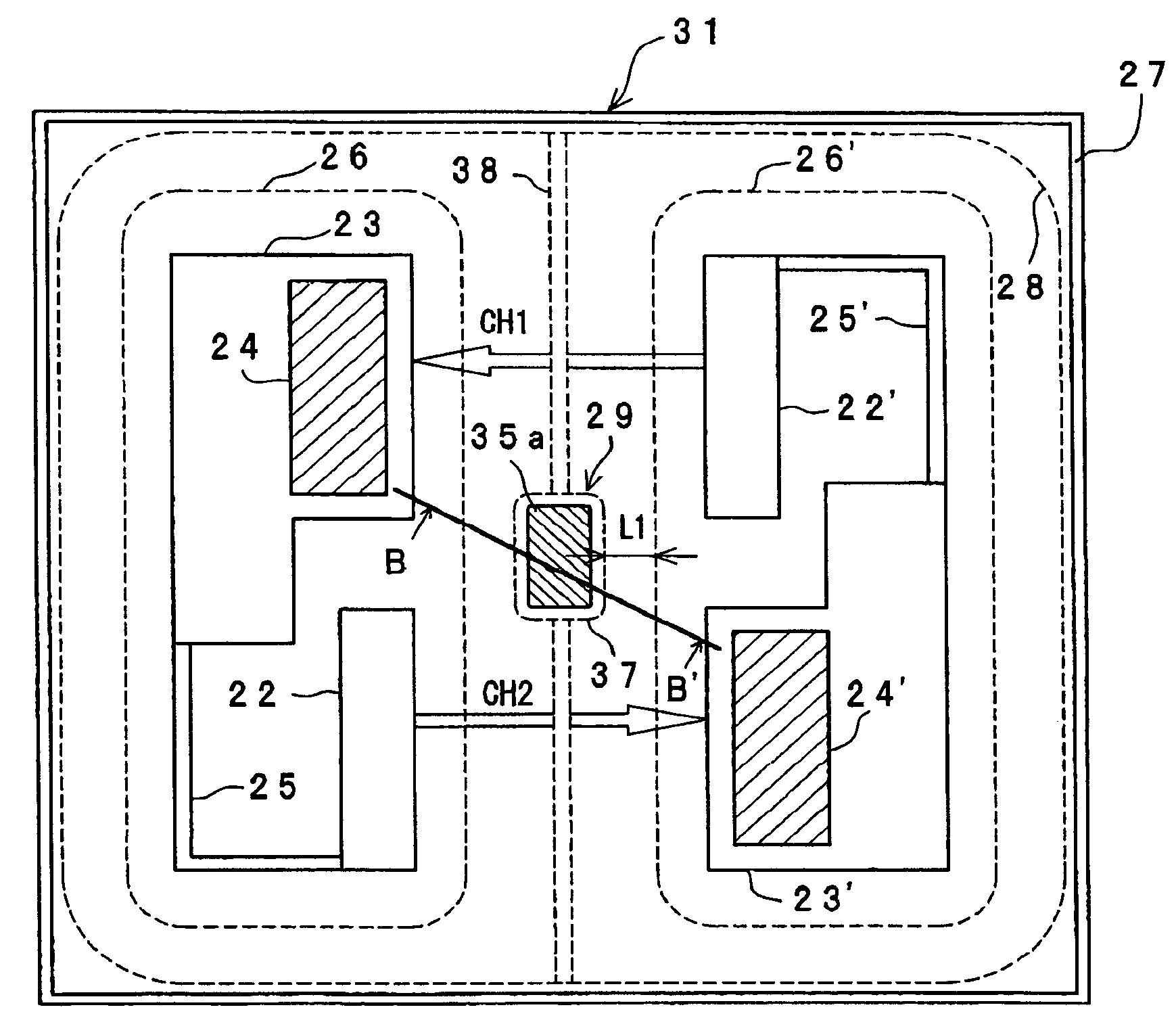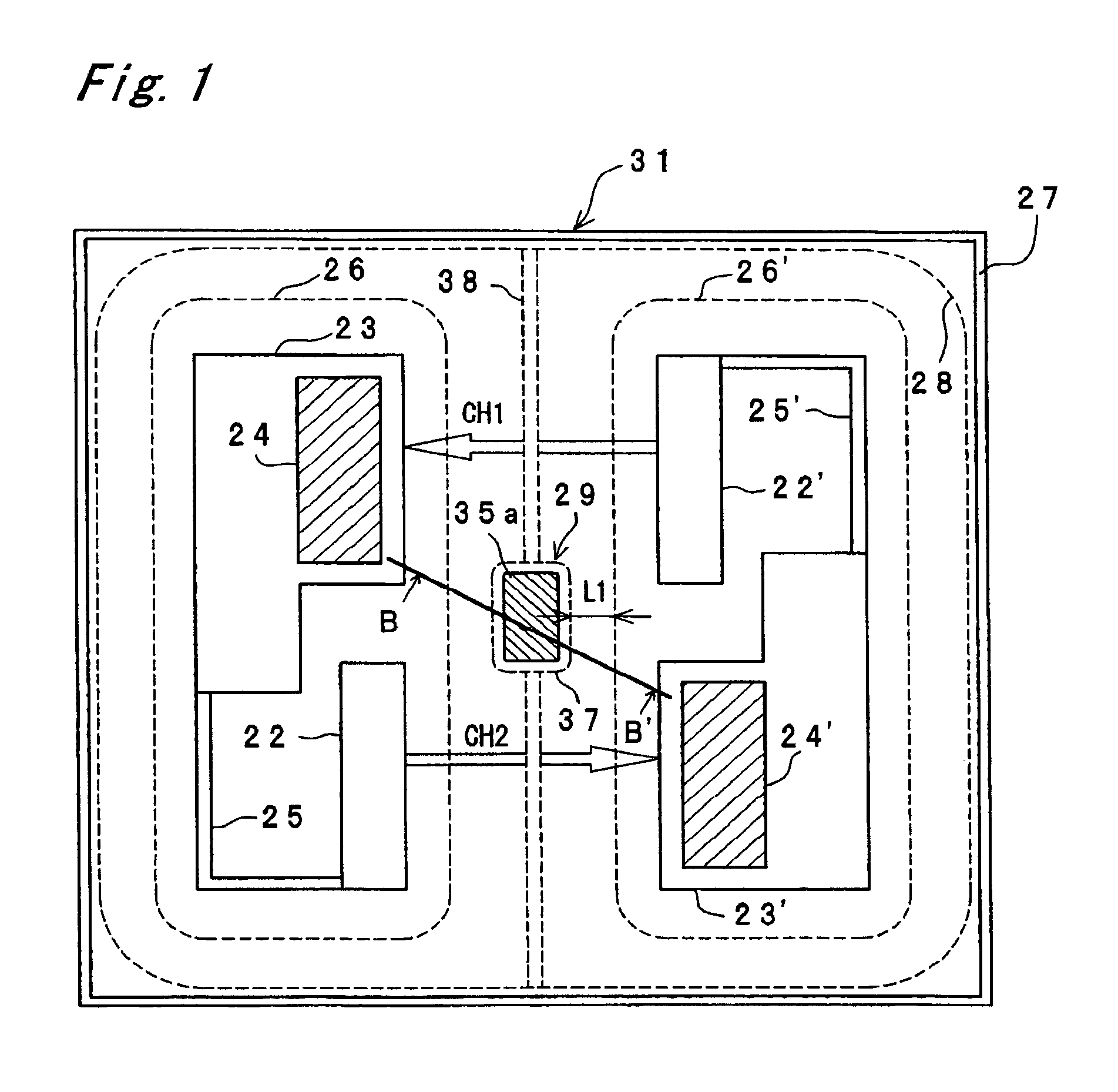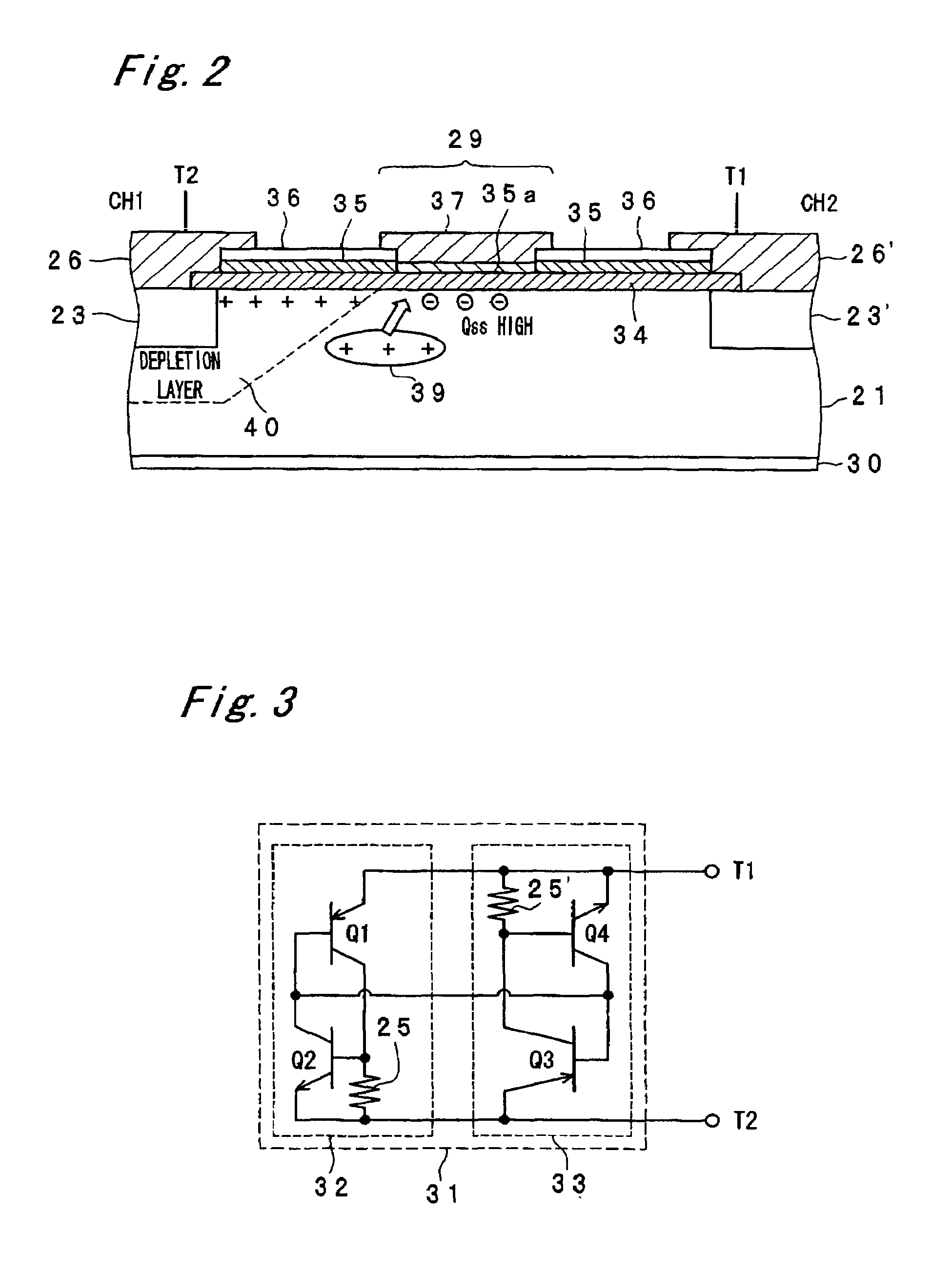Bidirectional photothyristor chip, optical lighting coupler, and solid state relay
a bidirectional, optical lighting technology, applied in emergency protective devices, coupling device connections, coupling device details, etc., can solve the problems of non-direct relation, failure to suppress, and conventional bidirectional photothyristor, so as to reduce the lifetime of holes, prevent the photothyristor section, and enhance the dv/dt characteristic
- Summary
- Abstract
- Description
- Claims
- Application Information
AI Technical Summary
Benefits of technology
Problems solved by technology
Method used
Image
Examples
first embodiment
[0168]FIG. 1 is a pattern layout view showing the schematic structure of a bidirectional photothyristor chip of the present embodiment. FIG. 2 is a cross sectional view taken along an arrow line B-B′ in FIG. 1. FIG. 3 is an equivalent circuit view showing the bidirectional photothyristor chip of the present embodiment. It is to be noted that the equivalent circuit view is the same as that of a conventional bidirectional photothyristor chip shown in FIG. 36.
[0169]In the bidirectional photothyristor chip 31, two anode diffusion regions (P type) 22, 22′ are disposed on the surface side of an N-type silicon substrate 21 at positions symmetric with respect to a point of the center of the bidirectional photothyristor chip 31 in such a way that the anode diffusion region 22 is positioned on the left-hand side and the anode diffusion region 22′ is positioned on the right-hand side in FIG. 1. Moreover, two P-gate diffusion regions (P type) 23, 23′ are disposed at positions symmetric with res...
second embodiment
[0182]A bidirectional photothyristor chip in the present embodiment has a structure in which a short diode as the carrier absorption diode is additionally provided to the channel isolation region 29 in the bidirectional photothyristor chip 31 in the first embodiment.
[0183]FIG. 4 is a pattern layout view showing the schematic structure in the bidirectional photothyristor chip in the present embodiment. FIG. 5 is a cross sectional view taken along an arrow line C-C′ in FIG. 4. FIG. 6 is an equivalent circuit view showing the bidirectional photothyristor chip of the present invention.
[0184]An N-type silicon substrate 41, anode diffusion regions 42, 42′, P-gate diffusion regions 43, 43′, cathode diffusion regions 44, 44′, gate resistances 45, 45′, Al electrodes 46, 46′, an Al electrode 47, an Al guard ring 48, an N+ layer 49, a CH1 photothyristor 52 and a CH2 photothyristor 53 in the bidirectional photothyristor chip 51 of the present embodiment are same as the N-type silicon substrate ...
third embodiment
[0190]A bidirectional photothyristor chip in the present embodiment has a structure in which the channel isolation region 29 in the bidirectional photothyristor chip 31 of the first embodiment further extends and is formed across the CH1 and the CH2 along the entire width of the chip.
[0191]FIG. 7 is a pattern layout view showing the schematic structure of a bidirectional photothyristor chip 71 in the present embodiment. It is to be noted that the cross sectional view of a channel isolation region in the bidirectional photothyristor chip 71 is almost identical to that of FIG. 2. Also, its equivalent circuit is identical to that of FIG. 3.
[0192]Anode diffusion regions 72, 72′, P-gate diffusion regions 73, 73′ cathode diffusion regions 74, 74′, gate resistances 75, 75′, Al electrodes 76, 76′ and an Al electrode 77 in the bidirectional photothyristor chip 71 of the present embodiment are same as the anode diffusion regions 22, 22′, the P-gate diffusion regions 23, 23′, the cathode diffu...
PUM
 Login to View More
Login to View More Abstract
Description
Claims
Application Information
 Login to View More
Login to View More - R&D
- Intellectual Property
- Life Sciences
- Materials
- Tech Scout
- Unparalleled Data Quality
- Higher Quality Content
- 60% Fewer Hallucinations
Browse by: Latest US Patents, China's latest patents, Technical Efficacy Thesaurus, Application Domain, Technology Topic, Popular Technical Reports.
© 2025 PatSnap. All rights reserved.Legal|Privacy policy|Modern Slavery Act Transparency Statement|Sitemap|About US| Contact US: help@patsnap.com



